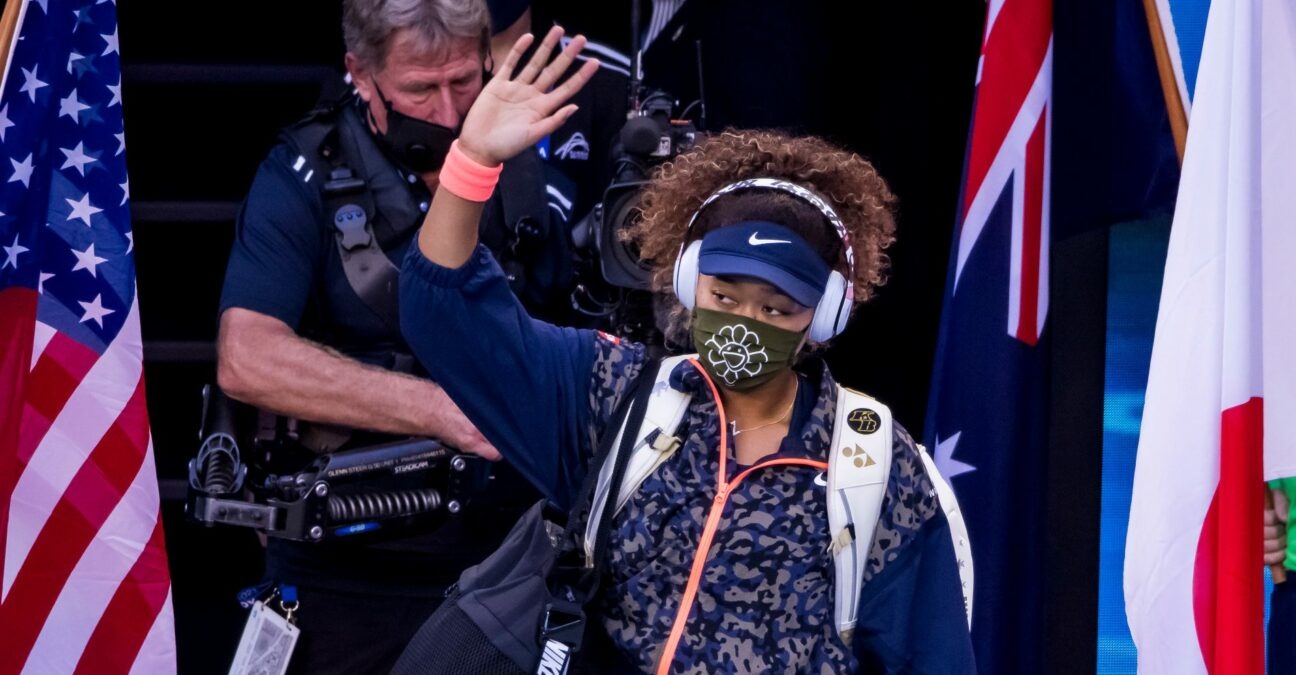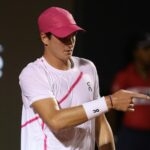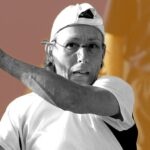Opinion : Naomi Osaka case reveals tennis players’ concerns fall on deaf ears once again
Months after tennis’ governing bodies shot down the PTPA initiative, Osaka’s shock withdrawal from Roland-Garros has once again shown the divide between players interests and business interests in the sport
 ICON SMI / PANORAMIC
ICON SMI / PANORAMIC
Naomi Osaka’s rise to superstardom wasn’t exactly planned. The 23-year-old’s first ever WTA singles title came at the BNP Paribas Open in Indian Wells in 2018 – one of tennis’ biggest tournaments outside the Grand Slams and the season-ending championships.
Tommy Haas, the former world No 2 who is also the Tournament Director of Indian Wells, recalled how nervous Osaka was during the trophy presentation that time.
“And then the ceremony for her, I remember when she got up to speak and thank everyone, it was almost, a little bit shocking right because I think she was so nervous and it was the first tournament she’d ever won on the tour, and it’s such a big one, and she was so shy, ” Haas said in an interview earlier this year.
Her second title came less than six months later at the biggest stadium in the tennis world – the Arthur Ashe Stadium at the US Open – in pretty strange circumstances. The final is remembered more for the on-court showdown between Williams and the chair umpire which led to the American receiving a game penalty and getting booed by the crowd during the match and the post-match ceremony. The awkwardness that Osaka experienced during that post-match ceremony was plain for all to see. Serena admitted she needed therapy to get over that final, so one can imagine that it must have been equally as hard for Osaka, who was still just 20 at the time.
Post that maiden Slam, Osaka won the Australian Open in early 2019 and became the world No 1. Like many others, she found staying at the top tougher than getting there. She struggled for the next few months including a third-round loss at Roland-Garros and a first-round loss at Wimbledon, where she walked out of the press room in tears. While she regained her form by winning titles in Japan and China at the end of 2019, Osaka did not seem ready to embrace her stardom and public profile just yet.
Naomi Osaka takes a bold stance during the Black Lives Matter movement in 2020
That was until the Black Lives Matter movement hit home last August. Even as tennis struggled to set up shop once again, Naomi Osaka decided to shut down her shop for one day at the Western & Southern Open – tennis’ first major event back after the pandemic – to support the Black Lives Matter movement. When she decided to not play her semi-final, the men’s and women’s tours followed her lead and shut down the combined event for a day – supporting a cause dear to a large part of their fan base and doing the right thing given the public sentiment.

Osaka’s decision to wear a mask with a name every time she walked on to the court at Flushing Meadows has been well-documented and the motivation to raise awareness about racial injustice spurred her on to a third Grand Slam singles title and a massive explosion in her brand value. In an era of cultivated brand images and personalities, Osaka came across as a breath of fresh air – someone who was shy and awkward about being in the spotlight, yet ready to stand up on the biggest platforms for a cause she really believed in.
After skipping the delayed Roland-Garros last year due to concerns about travelling in a pandemic, Osaka returned to dominating the tour in Melbourne this year where she won her fourth Grand Slam title. The 23-year-old seemed to finally be thriving in her role as tennis champion and leader of the women’s game, and being someone ready to use her platform to make a difference.
From hardcourt queen Osaka to what Osaka needed on clay or grass
But like so many others, behind Naomi Osaka’s awkward smile and music-blasting headphones lurked demons she was not ready to talk about just yet. Once the tour moved to clay, the narrative shifted from hardcourt queen Osaka to what the Japanese needed to do to start dominating on clay or grass. Anyone who has played and excelled on those surfaces know that you need to play a lot on those surfaces over years to adjust to them and it is something that a player will unlikely improve drastically over one season. Osaka did not play on clay last year and the grass court season was completely wiped off in 2020.
Early losses in Madrid and Rome further undermined Osaka’s confidence heading into Roland-Garros, so much so that she decided she would not take part in the mandatory press conferences in Paris – something that she felt was a larger systemic issue not concerning just her but many other athletes – and something she wanted to work with the tours in the future. The Japanese had also stated she would be willing to pay the required fine and she hoped the French Tennis Federation (FFT) would donate that amount to a mental health charity.
What followed was skepticism from some players, criticism from some journalists as well as French Open officials. On Sunday, after Osaka kept her word (pun intended) and skipped the mandatory press conference, the four Grand Slams issued a joint statement, stating that “a core element of the Grand Slam regulations is the responsibility of the players to engage with the media, whatever the result of their match, a responsibility which players take for the benefit of the sport, the fans and for themselves.”
The Grand Slams clearly wanted to send a message to Osaka and anyone else who might follow in her footsteps that they wouldn’t stand for players opting to go down this path. Although their statement balanced their message by saying “The mental health of players competing in our tournaments and on the Tours is of the utmost importance to the Grand Slams” – their tone and actions seemed to indicate otherwise.
Another part of the Grand Slam statement that said they “want to underline that rules are in place to ensure all players are treated exactly the same”. But the amount of the fine, $15,000 for skipping a first-round press conference at Roland-Garros was double the amount world No 1 Novak Djokvoic received for skipping a press conference at the 2020 US Open after being defaulted from the fourth round. The quarantine and training conditions for players in Melbourne and Adelaide at this year’s Australian Open were anything but equal for the players involved – something that has been discussed and debated about ad nauseam.
The PTPA initiative last year
This is not the first time over the past year that tennis governing bodies have failed to listen to some of their marquee players. Last August, when Djokovic, Vasek Pospisil and 60 odd tennis pros got together to launch the Professional Tennis Players Association, the ATP and governing bodies huddled to come out with a similar strongly-worded message and barred the likes of Djokovic and Co from being re-elected to the ATP Player Council.
Sure there was lots to question about the timing of the PTPA launch, the absence of WTA players, the lack of a formal agenda and bye laws, the fact that the new ATP management needed some time to execute their vision and that the Slams have actually moved the needle in recent years to improve early round prize money. But can anyone question that these players have genuine concerns that have not been adequately discussed and addressed, either through the existing system (the ATP/ WTA Player Council) or outside of it.
Mind you, the statement at the time of the PTPA launch from the four Grand Slams, the two tours and the ITF came just a few months after tennis’ seven governing bodies found themselves on two different sides when the FFT decided to unilaterally postpone the 2020 edition of Roland-Garros without consulting any of the other bodies. Why? Simply because they could and it was good for their overall business interests and that of French Tennis.
Moretton decided not to take questions from the press, and Osaka should do that ?
On Monday evening, Naomi Osaka issued yet another statement, less than 24 hours after sister Mari Osaka posted and then deleted a message defending her sister on another public forum. This time, Osaka announced her withdrawal from Roland-Garros and revealed her own struggles with anxiety and depression in more detail in her second statement.
A little later, a shorter statement followed – this time from the FFT President Gilles Moretton, who read it out in front of the media in Paris. Understandably, Moretton decided not to take questions from the press himself after he read the statement. He chose to keep that right for himself but to deny Osaka the same courtesy when she was not up to it.
Playing the first night match in Roland-Garros history on Monday, Serena Williams, who hugged Osaka the night of their US Open final in 2018, empathized with Osaka, saying that she has been in the same position many times before and wished that she could give Naomi a hug.
Had that hug come from the FFT and the other Grand Slams after her initial statement, Naomi Osaka might still be competing in the Paris draw – or maybe not – we’d never know. What we do know is that she has withdrawn and once again, tennis’ governing bodies appear to have put themselves and their business interests ahead of the players concerns.
Several former players have said media obligations are part of the job and players have been doing it for years. For one, former players were not subject to the same level of scrutiny that today’s players are subjected to due to the explosion and all-pervasive nature of social media. And what if they have been doing it wrong all this time, and need to improve the way player-media interactions conferences are run and administered.
It’s a whole new ball game out there for these younger players as compared to the generations before them and if the sports officials don’t equip and help them when they need it, we will soon be left with an even bigger divide between tennis players and the tennis administrators.







